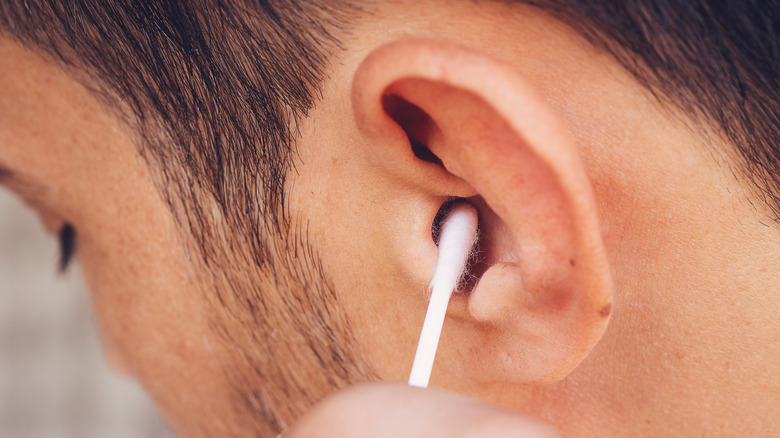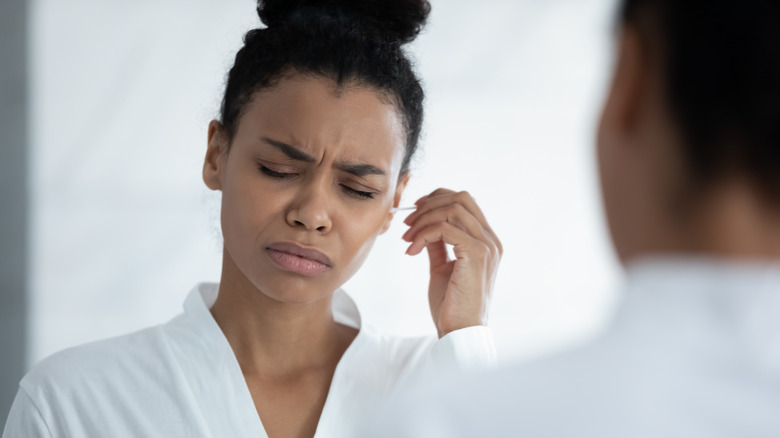Why You Should Think Twice Before Using Q-Tips
Q-tips are a common item in households that are often used to clean the ears. The cotton swabs are often a person's first choice as a tool to remove earwax from the ear canal.
While the waxy substance can appear gross, often brown or orange in color, earwax is actually necessary for the proper functioning of the ear. According to Healthline, earwax protects the ear from intruding bacteria and dirt, and keeps the ear from becoming too dry.
Ears are a self-cleaning body part, meaning you often don't have to do the work yourself. This is also why people may experience earwax falling to the outside of the ear. Verywell Health reports when you move your jaw, such as while talking or chewing food, old earwax is pushed outward once it fully dries. However, sometimes the ears become too clogged to clean at home, so a trip to the doctor's office may become necessary, per Cleveland Clinic.
Dangers of q-tips in ears
Q-tips are convenient and quick to use, however, they can also be misused in the ear. When misused, cotton swabs can be detrimental to the ear. According to Salus University Health, q-tips can actually push earwax further into the ear, and in turn, cause discomfort, impaction, or rupture of the eardrum. In some cases, a person may end up needing surgical intervention to get rid of the earwax. Hearing loss or other long-term complications can occur if left untreated.
When q-tips push earwax too far, you risk pushing the bacteria in the earwax further into your ear canal, possibly resulting in an ear infection (via Healthline). To safely clean your ears at home, you'll want to soften the earwax first by adding a few drops of an oil, such as baby oil or glycerin, into the affected ear. Approximately two days later, once the earwax has softened, use a bulb syringe to irrigate your ear, and then drain the water from your ear by tilting your head. Finish by drying the outer part of the ear with a towel.


